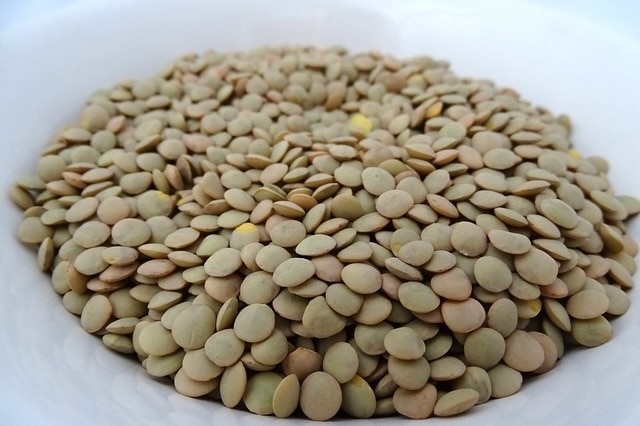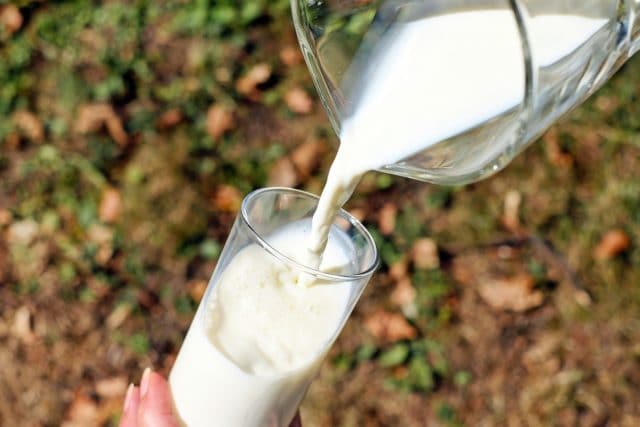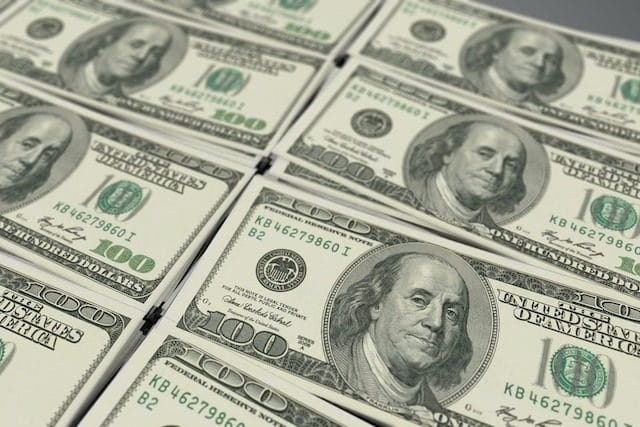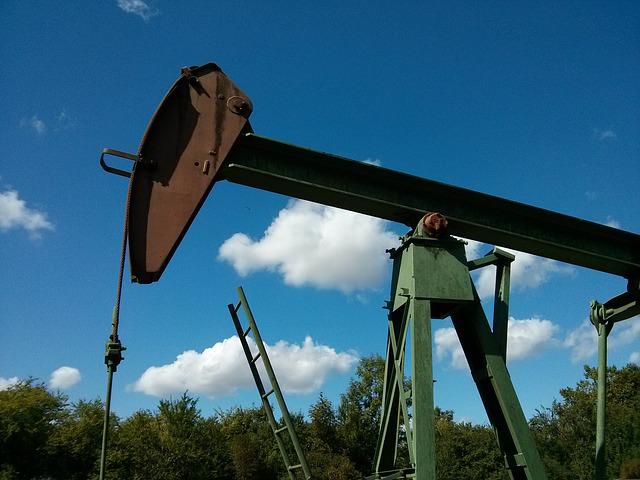We live in a consumer world and we are spoiled for choice all the time, even if the prices of things are through the roof and we can’t actually buy everything we want. The fact remains that there is plenty of stuff in the world and there always has been. Where all that stuff comes from is something that most of us don’t spend a lot of time thinking about. It’s also possible we just make assumptions. The truth about leaders in the global production of various items is often far more surprising than you might think.
10. Pakistan is One of the World’s Largest Producers of Bagpipes

Like the accordion, bagpipes are an oft-maligned musical instrument. Those who like them like them a lot. But not a lot of people like them. Generally, the bagpipe is associated with Scotland. There are also Irish bagpipes, and you might find some on the east coast of Canada if you’re into the music scene there. But there are not a lot of bagpipes in country music, rock and roll, hip hop, traditional African, K-pop, or anything else.
Despite the long cultural history of bagpipes in Scotland, the country is not responsible for all the instruments you’ll find in the wild today. In fact, Pakistan is one of the largest producers of bagpipes in the world.
Bagpipes are manufactured in the city of Sialkot. They have been for generations. About 10,000 sets of pipes per year are produced there. While it seems like an unusual matchup, you could thank Colonial England for their prevalence. When Britain was laying claim to India, before Pakistan separated and became its own country in the ’40s, the British soldiers had bagpipes with them all the time.
Pipes would need to be fixed and new ones needed to be produced so locals learned the craft and the music became part of Pakistani culture. While they do export a lot of pipes, many more stay in the country and some bagpipers play weddings and other festivals in the country. Outside of Scotland, the country is the biggest producer of bagpipes in the world.
9. Ball Makes Almost All the Aluminum Beverage Cans in the World

The world uses about 180 billion aluminum cans per year. Think of how many cans of Coca-Cola are sold every year – they use 17% of the aluminum market just for themselves. Then there’s Pepsi and around 375 other companies that make soft drinks, most of which will sell their products in cans. That’s a lot of aluminum. But who makes it all?
Coca-Cola, Pepsi, and the others don’t make their own cans, they order them from a company called Ball. That works out to roughly 50 billion cans per year according to the company. That number is on their own site but it’s also out of date as, in 2021, they shipped 112.5 billion. That’s 14 cans of soda for every human in the world, give or take.
Ball makes cans for soda, beer, water, or for whatever the heck you want to put in a can. They’re happy to take a contract from anyone, no doubt. They allow clients to custom design cans, they can be different shapes and sizes, have different pull tabs, or whatever it is you need. That’s why you can look at a dozen different cans that have very little in common and not realize the same place made them all.
Ball’s so big in the industry that they sell product well ahead of time and demand outstrips supply. In 2021 their whole 2022 scheduled production run was already spoken for.
8. Saskatchewan Produces The Most Lentils

Lentils, which are consumed most frequently in India, are arguably one of the least thought-about foods in the world. When was the last time you sat down and really thought about your lentils? If you live in Saskatchewan, then you might do it more often because Saskatchewan produces a third of the lentils in the entire world.
Canadian farmers took advantage of the fact that lentils don’t need to have nitrogen-rich soil to grow because they actually pull it out of the air, which makes it a cheap crop to grow overall. The industry in Canada only started in the 1970s but now they are the world’s leading grower and exporter of lentils.
7. Liechtenstein is the World’s Biggest Maker of False Teeth

So do you have all your teeth? If not, do you know where your fake teeth came from? Statistically speaking, if you have false teeth, they probably came from Liechtenstein. You may not be able to find it on a map, but hopefully, your dentist can. The country is the world’s largest producer of dentures.
Despite not even having an airport in the entire country, or a train station, The country produces 60 million false teeth per year. Inexplicably those 60 million come in 10,000 shapes and sizes. That’s a heck of a lot of teeth. They make 20% of all the false teeth sold in the entire world.
6. Lego is Technically the Largest Rubber Tire Manufacturer in the World

Ninety-four million automobiles were manufactured in 2023 and all of them need rubber tires. That means someone out there is producing a hell of a lot of tires. Most of us know the big names in tires like Michelin, Goodyear, Bridgestone, and so on. You would also think one of those is the biggest manufacturer of tires in the world but you’d be wrong.
Lego makes far and away the most rubber tires on earth. In 2012 they produced over 380 million tires, which puts them more than 100 million ahead of second place Michelin. This is thanks to the fact that Lego sets almost all come with some kind of vehicle that has to have tires put on it.
Now, this entry could end here and still be technically correct, but there is a small caveat that’s worth pointing out. Lego may produce more tires than Michelin, but Michelin clearly uses a lot more rubber. You have to keep in mind that a Lego tire is rather small. So Michelin is arguably using vastly more rubber in their production to make full-size tires for actual cars. But, just by the numbers, Lego has them beat.
5. A Quarter Of All the Milk in the World Comes from India

Have you ever seen an ad for milk and it mentioned that the milk is from whatever country you live in? You might not have ever questioned where the milk came from before, just assuming it was local because why wouldn’t it be? And maybe the ad is just trying to tout the local dairy industry because lots of people like to support local farmers and such, which is fine.
Depending on where you live, however, there’s a chance your milk isn’t homegrown. Almost a quarter of all the milk in the world comes from India right now. They took over from the US as the biggest dairy producer back in 1997. They export a lot of their dairy to Saudi Arabia, Bhutan, Bangladesh, UAE, and the United States.
In 2017 the country produced close to 160 million tons of milk per year, more than half of it came not from cows but water buffalo.
4. Coca-Cola is the Biggest Juice Manufacturer in the World

The world juice market is enormous. It was worth over $131 billion in 2021. Coca-Cola, which has owned the Minute Maid brand for years, is the largest producer of juice in the world. Minute Maid is just one of the juice brands that they own, with Simply Juice, Del Valle Juice, Innocent, and others under their umbrella, not to mention sodas like Fanta that also have juice content.
Minute Maid is most closely associated with orange juice, but Coca-Cola produces a staggering amount of juice in addition to just orange juice. In fact, the company has over 1,000 juice products that they produce. A full 38% of everything Coca-Cola produces is juice or a juice drink.
3. Peru Produces the Most Counterfeit US Currency in the World

On the one hand, it seems like a good idea to be a world leader in something. On the other hand, you always want to be careful about what you’re known for because not everything is glamorous or even legal. Nevertheless, someone has to be the biggest producer of counterfeit US dollars in the world and that honor goes to the country of Peru.
It’s not just that Peru makes a lot of counterfeit US dollars, they do it really well. In 2016 the US government recovered $30 million worth of fake currency from the country. It’s estimated 60% of all fake US currency comes from Peru, manufactured in rural facilities, and smuggled to American ports inside pottery, sneakers, toys, and even Bibles.
One counterfeiter interviewed by the Guardian said his outfit made up to $5 million in fake bills weekly. It takes between 10 and 12 people to make the money the right way, covering everything from the initial design to obtaining supplies and running the printer. Someone even has to use a needle to sew the security thread into each bill by hand to make it look as authentic as possible.
2. China Produces Far More Watermelon Than Anywhere on Earth

Who doesn’t love a juicy, sweet watermelon? It’s one of the best treats of the summer. They’re popular all over the world, to the point that you may not be aware that the largest producer of watermelon is actually China.
It’s not just that China produces a lot of watermelon, maybe that’s not even surprising on its own. But how much watermelon China grows compared to everyone else is almost unbelievable. The second largest producer of watermelon in the world is India. India grows about 3.5 million watermelons in a year. China grows 60.1 million watermelons a year. The Chinese also eat 108 pounds of melon per capita.
The average watermelon weighs 20 to 25 pounds which means China is growing 1.2 billion pounds. America grows about 38 million pounds or about 1.9 million melons.
1. The US is the Top Oil Producing Nation in the World

Renewable energy has been a big topic for ages now. Wind and solar are always going to be topics of discussion, there’s plenty of hype around electric cars but the fact remains much of the world runs on oil. All of this renewable energy is, in large part, a way to compensate for oil which we know won’t last forever.
When we think of oil-producing nations usually it’s the Middle East that comes to mind. You don’t have to go too far back in history to find a lot of wars and a lot of money wrapped up in that region of the world and the oil that is produced there.
Given how much prevalence Middle Eastern oil has in the media and in the public conscience it’s surprising to realize that the largest oil-producing nation in the world is the United States.
In 2018 the US overtook Saudi Arabia as the largest producer of oil in the world. In that year, 13.21% of oil was produced in America compared to 12.77% in Saudi Arabia and 12.96% in Russia. In 2022 it was up to 14.73%.
In 2023, the United States claimed 22% of world oil production. That works out to 21.91 million barrels of oil per day. Compare that to Saudi Arabia’s 11.13 million barrels. That said, the US also consumes 20% of all the oil in the world, so they’re just barely balancing the scales.